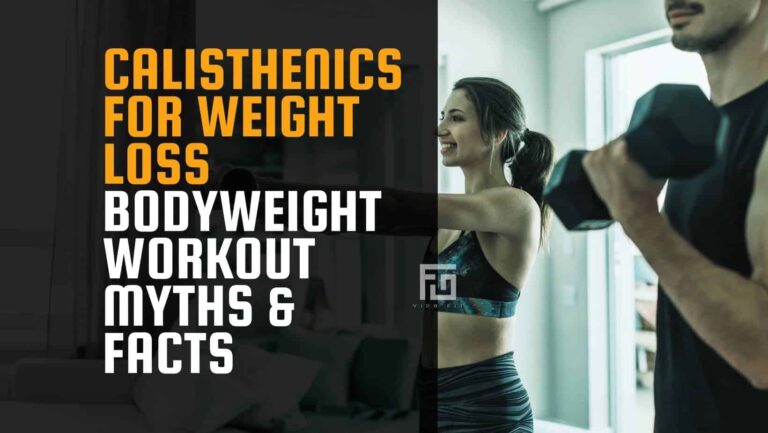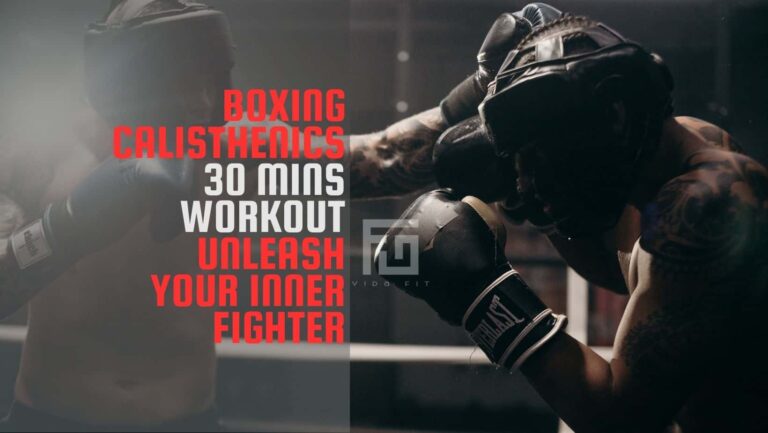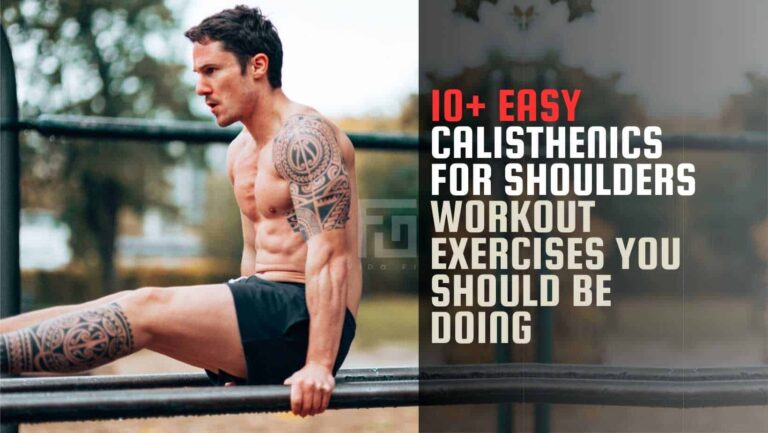ONLY 10 Min Calisthenics Abs Workout | 5 Best Abs Exercises
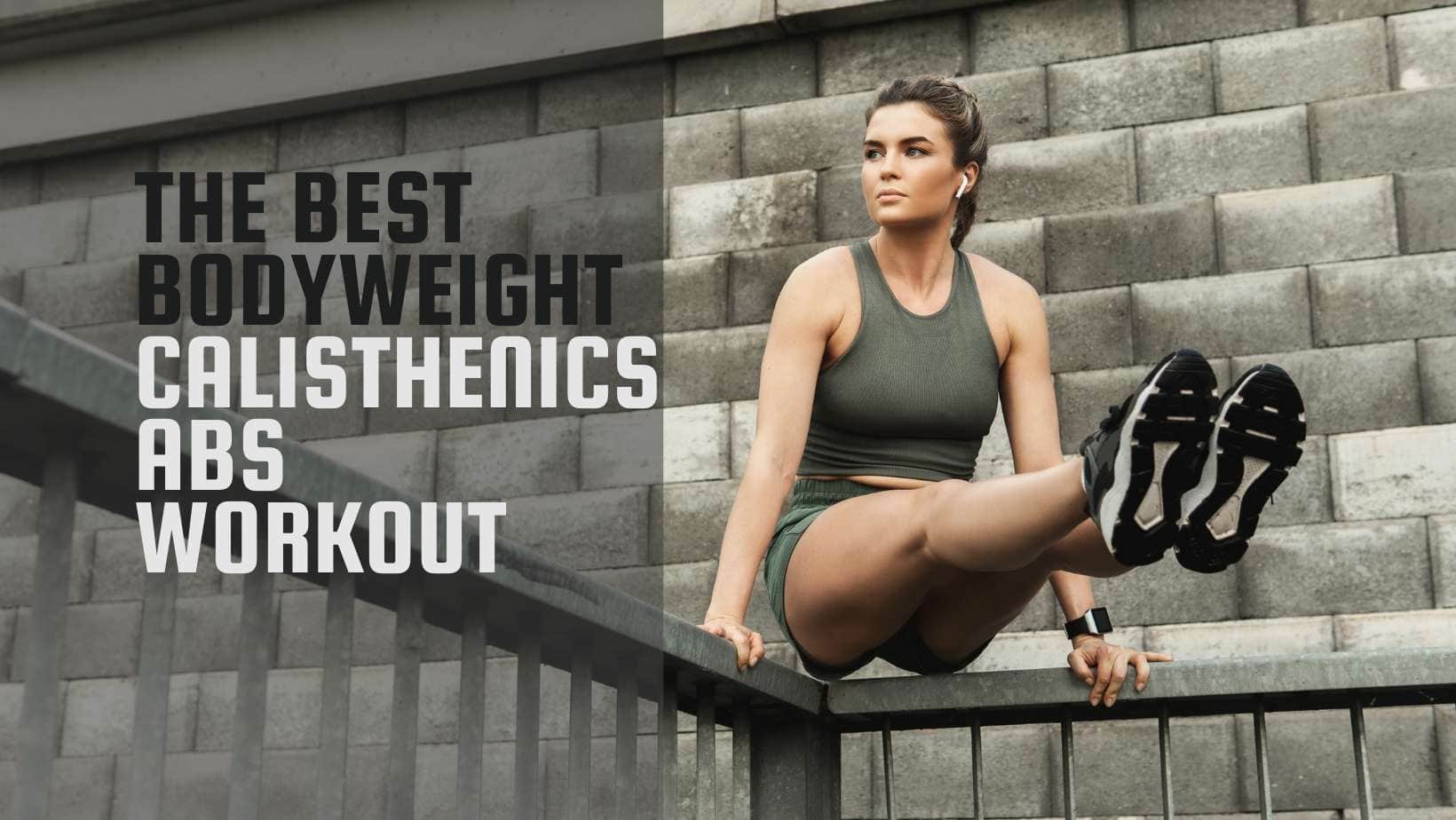
Welcome to the ultimate guide to calisthenics abs workout!
If you’re aiming to strengthen your core but are tight on time, you’ve landed in the perfect spot.
Imagine achieving a stronger, more sculpted midsection with only a few minutes a day.
This curated list of the **5 Best Calisthenics Abs Exercises** is designed to give you maximum results in just 10 minutes.
So, get ready to transform your routine and see incredible results with these top calisthenics exercises, specially designed for busy individuals like you!
Table of Contents
5 Best Calisthenics Ab Exercises Overall
Some of the best calisthenics ab exercises to target upper and lower abs include
1. Hollow Body Hold
What Is Abdominal Hollowing?
The hollow body hold (that sounds like the name of a movie ;-)), falls between intermediate to advanced levels of abdominal exercises and should be included in your core workouts.
This exercise is great for your abdominal muscles and core in general.
To perform the Hollow Body Hold, follow these steps:
- Start Position: Lie flat on your back on a mat.
- Engage Your Core: Tighten your abdominal muscles, pressing your lower back into the mat.
- Leg Position: Extend your legs straight out, lifting them slightly off the ground.
- Arm Position: Extend your arms overhead, keeping them close to your ears.
- Hold the Position: Maintain this position, ensuring your lower back remains in contact with the mat.
Remember, the key is to keep your core engaged throughout the exercise.
2. The Hollow Body Plank
This movement should be part of your core exercises and your calisthenics workouts. It looks so simple, but it will make you sweat!
The Hollow Body Plank is a variation of the traditional plank exercise, focusing on core engagement and stability. Here’s how to perform it:
- Start in a traditional plank position: forearms on the ground, elbow under shoulders, legs extended, and toes on the floor.
- Engage your core muscles firmly, as in the Hollow Body Hold.
- Instead of a flat back, slightly round your back by tucking your pelvis and drawing your belly button towards your spine.
- Keep your body in a straight line from your head to your heels.
- Maintain this position, ensuring your core remains engaged and your body forms a slight curve, resembling a hollow body position.
This exercise strengthens the core muscles by adding an extra challenge to the standard plank.
3. The L sit
This exercise looks simple, but you will need really strong core muscles and proper technique if you want to succeed at this movement.
To perform the L-sit exercise:
- Start Position: Sit on the floor with your legs extended straight in front of you.
- Hand Placement: Place your hands on the ground beside your glutes.
- Lift: Press down into your hands, keeping your arms straight, lift your body, and raise your legs off the floor.
- Leg Position: Keep your legs straight and parallel to the ground, forming an ‘L’ shape with your body.
- Hold: Maintain this position, ensuring your core is engaged, and your body is stable.
The L-sit is a challenging exercise that targets the core muscles and hip flexors.
4. Reverse Crunch
To perform the Reverse Crunch:
- Start Position: Lie on your back on a mat, bend your knees, and keep your feet flat on the floor.
- Hand Placement: Place your hands beside you, palms down, for support.
- Lift Your Legs: Bring your knees towards your chest, lifting your hips off the ground.
- Curl Up: Curl your pelvis and lower back off the floor, tightening your abs.
- Lower Slowly: Slowly lower your hips back and lower your legs to the start position without letting your feet touch the floor.
This exercise targets the lower abdominal muscles effectively.
5. Hanging Leg Raises
To perform Hanging Leg Raises:
- Grip a Pull-up Bar: Hang from a pull-up bar with an overhand grip, arms shoulder-width apart.
- Stabilize Your Body: Keep your body still and avoid swinging.
- Lift Your Legs: Raise your legs straight up in front of you, keeping them together.
- Upper Position: Lift until your legs are parallel to the ground or higher.
- Controlled Descent: Slowly lower your legs back to the starting position.
This exercise targets the lower abs and hip flexors.
10 Min Calisthenics Abs Workout For ALL Fitness Levels
Calisthenics workout for Beginners
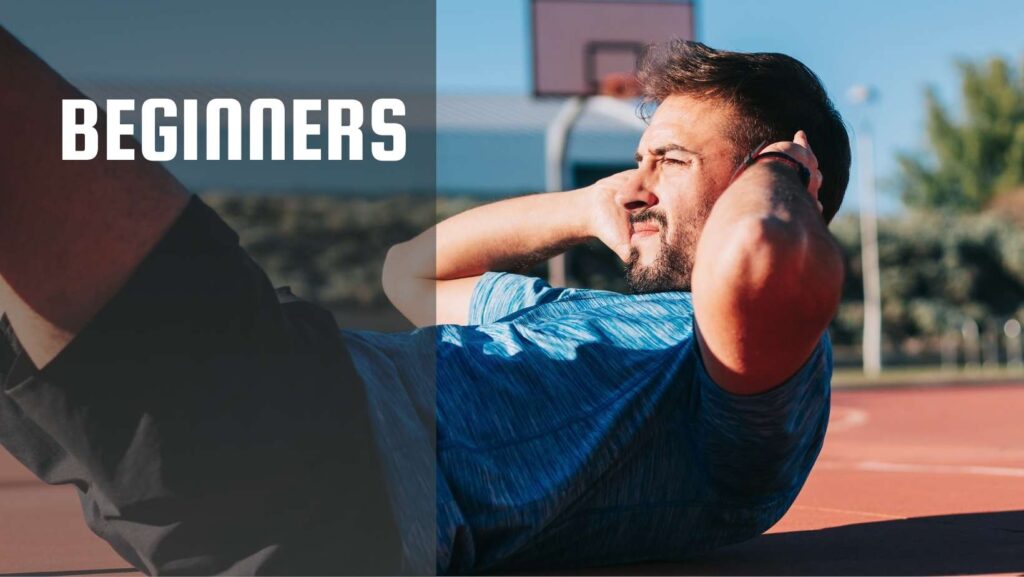
- Sit-ups – 20 reps
- Bird Dog Pose -5 reps on each side (spent five seconds on each rep)
- Lying Bent Leg Raises (these are great for your lower abs) – 10 reps
- Normal Plank – 45-sec
- Reverse Crunches (great for upper abs) – 20 reps
Rest for 2 minutes, and repeat as many times as you CAN! (2 times at least are recommended).
Calisthenics abs workout for Intermediates
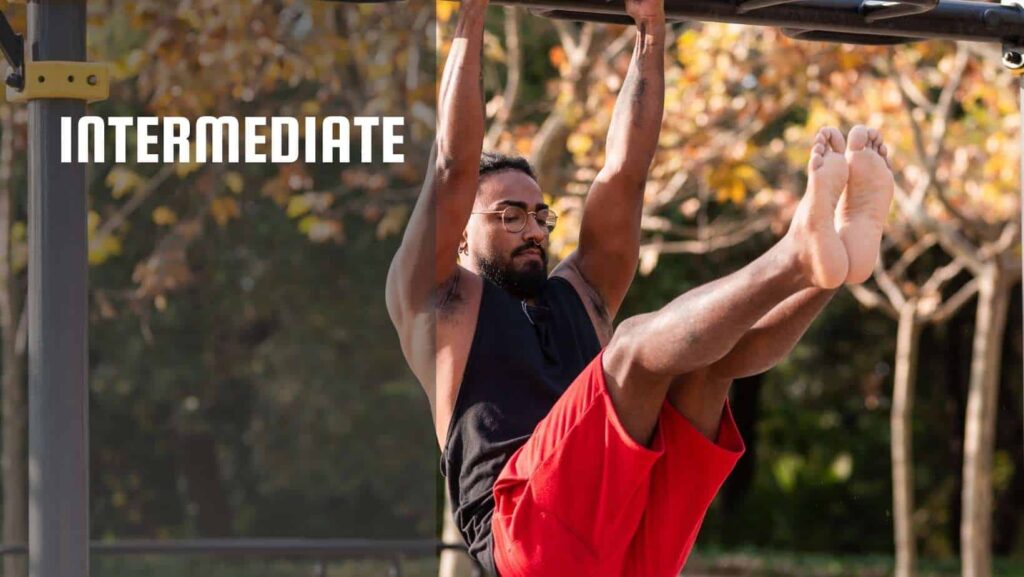
- The hollow body holds– 15 seconds hold
- Mountain Climber – 15 seconds activity
- Reverse Crunches – 20 reps
- Hanging Knee Raise – 20 reps
- Ab Wheel Rollout (this one will challenge your core strength) – 10 reps
Rest for 2 minutes, and repeat as many times as you CAN! (2 times at least are recommended).
Calisthenics abs workout for Advanced
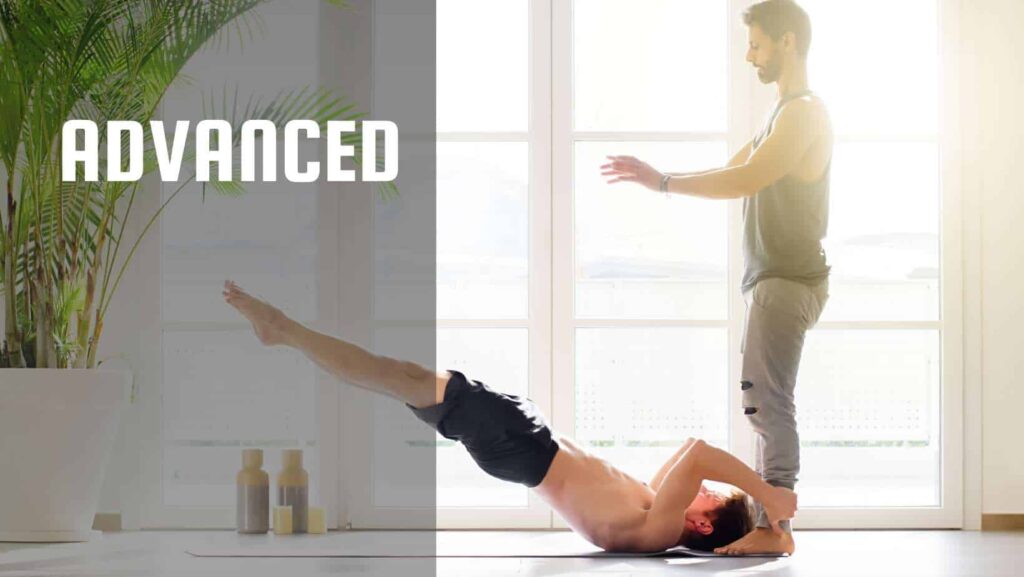
- Hanging leg raises (try keeping your legs straight) – 15 reps
- Sit-ups – 15 reps
- Dragon Flag – 5 reps
- Ab Wheel Rolling – 10 reps
- Hollow Body – 15 secs
Rest for 2 minutes, and repeat as many times as you CAN! (2 times at least are recommended).
Why To Train The Core Muscles Is Important?
Read my article Benefits Of Calisthenics | Why it is Great And Why You Should Do It? to discover the amazing benefits of Calisthenics.
I find it surprising how people give a lot of importance to big, more complicated moves and neglect the basics when it comes to calisthenic abs workout and ab exercises.
In my research, I found PubMed has released many articles discussing the importance of core strength and stability, showing how it improves performance in general and is key to preventing injuries.
I put the references to these articles at the bottom of this blog in case you want to have a look.
In the book – Becoming a Supple Leopard – The Ultimate Guide To Resolving Pain, Preventing Injury and Optimizing Athletic Performance by Dr. Kelly Starrett and Glen Cordoza, the authors refer to a test called “The Belly-Whack Test – It’s simple: You should always have enough abdominal tone to take a whack to the belly. We do this at our gym and around the house. If you’ve got a spongy middle, you’ll get caught right away.”
One way to improve our abdominal tone is by doing ab exercises to strengthen our core, focusing on the abdominal muscles.
Let’s get into it!!!
What is the best calisthenic workout for abs?
My research found that you should maintain a flat or neutral spine when carrying out most major calisthenics exercises.
If you allow your lower back to curve while doing any exercise, including calisthenics, it increases your chances of injuries.
This tells me that we should add to our workouts ab exercises known as anti-extension exercises.
The objective of an anti-extension exercise is to prevent the excessive arching of the lower back.
The following exercise targets your core muscles and will put them on fire! 🔥
Anti-extension Exercises For Calisthenics Abs Workout
6. Planks
These are great for developing a strong core
To perform Planks:
- Start in Push-up Position: Begin in a push-up position with your hands directly under your shoulders.
- Lower to Forearms: Lower onto your forearms, keeping elbows under your shoulders.
- Form a Straight Line: Keep your body in a straight line from head to heels.
- Engage Core: Tighten your abs, glutes, and thighs.
- Hold Position: Hold this position for a set time.
Planks are excellent for building core strength and stability.
Kara Cutruzzula, in her article I tried planking 5 minutes everyday month gives us her feedback on doing planks.
“Not every day was successful. I forgot some days, and I dodged some others, but that’s the biggest lesson I’ve learned in this challenge — things happen. Treating each day like a short chance to accomplish micro goals was helpful. The point was to challenge myself mentally and physically. And now my biceps are a little more toned, and my back doesn’t hurt anymore, so you know what? I might try again tomorrow.”
7. Leg Raises
It targets lower abs
More advanced calisthenics practitioners mix up pull ups with leg raises.
8. Banded Deadbug
Great for core development and core stability
9. Swiss Ball Stir The Pot
To perform the Swiss Ball Stir the Pot:
- Start in a Plank Position: Place your forearms on a Swiss ball, legs extended, and toes on the floor.
- Engage Your Core: Keep your core tight and back straight.
- Circle Movement: Move your arms to roll the ball in a circular motion.
- Controlled Pace: Maintain a steady pace and controlled movement.
- Alternate Directions: After a set, change the direction of the circles.
This exercise enhances core stability and strength by adding movement to a plank position.
10. Ab Wheel Rollout
Anti-Lateral Flexion
When we do anti-lateral flexion core exercises, we help our core muscles to resist the side flexion of the spine and improve our lateral stability.
All those fancy words mean something very simple but super important: consider the numerous occasions you carry a heavy load on just one side of your body.
Anti-lateral flexion may reduce the risk of getting injured in these situations.
This is why we should incorporate these ab exercises in our core workouts:
11. Side Plank
To perform Side Planks:
- Lie on Your Side: Start by lying on one side, legs extended.
- Elbow Placement: Place your elbow under your shoulder.
- Lift Your Hips: Lift your hips off the ground, forming a straight line from head to feet.
- Balance: Balance on your forearm and the side of your foot.
- Hold the Position: Hold for a set time, then switch sides.
Side planks target the obliques and help improve overall core stability.
12. Single-arm farmers carry
13. Single arms waiters walk
Anti-Rotation
These exercises are designed to counteract the rotation of your torso. So they work the external oblique ab muscles.
Some examples of anti-rotation exercises are:
14. Pallof press (with bands)
Great for core development and core stability
15. Bird dogs
If you are looking for isometric exercises to include in your calisthenic ab workouts, you just found one.
Bird dogs are great bodyweight exercises that should be part of your bodyweight training.
To perform the Bird Dog Pose:
- Start on All Fours: Begin in a tabletop position with your hands under your shoulders and knees under your hips.
- Extend Opposite Limbs: Extend one arm forward while simultaneously stretching the opposite leg back.
- Maintain Balance: Keep your core engaged to balance and your back straight.
- Hold the Pose: Hold the position for a few seconds.
- Switch Sides: Return to the starting position and repeat with the other arm and leg.
Mike Robertson, in his article ‘Effective Birddog Performance’ states:
“Birddogs are a fantastic exercise for not only improving core stability but for rehabilitating the lower back as well. Unfortunately, a lot of people assume that just because an exercise appears simple that they can mindlessly crank out the reps.”
16. Cable Chops
17. Rotation Med Ball
Other Calisthenics Abs Exercises
18. Sit-Ups

To perform Sit-Ups:
- Lie on your back on a mat with knees bent and feet flat on the floor.
- Cross your arms over your chest or place them behind your head.
- Engage your core and lift your upper body towards your knees.
- Keep your feet grounded and avoid using momentum.
- Slowly lower back to the starting position.
This classic exercise strengthens the abdominal muscles.
19. Lying Bent Leg Raises
To perform Lying Bent Leg Raises:
- Lie Down: Lie flat on your back on a mat.
- Bend Your Knees: Bend your knees with your feet flat on the floor.
- Lift Your Legs: Lift your knees towards your chest.
- Controlled Motion: Lower your feet back down without touching the floor.
- Repeat: Perform multiple repetitions.
This is a beginner exercise that targets the lower abdominal muscles.
20. Mountain Climbers
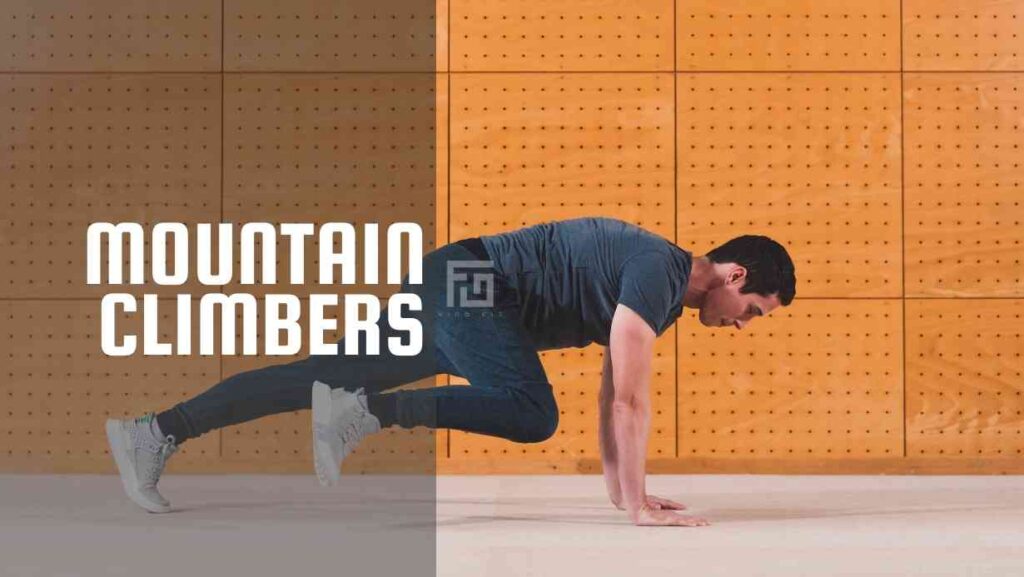
To perform Mountain Climbers:
- Start in Push-up Position: Begin in a push-up position, hands shoulder-width apart.
- Drive Knees Forward: Alternate driving your knees towards your chest as if running in place.
- Keep Hips Down: Maintain a straight back and keep your hips down.
- Pace: Continue at a quick, consistent pace.
- Breathe Steadily: Keep your breathing steady throughout the exercise.
Mountain climbers are a dynamic exercise that improves cardiovascular fitness and strengthens the core.
21. Ab Wheel Rollout
To perform the Ab Wheel Rollout:
- Kneel on a Mat: Start on your knees, holding an ab wheel with both hands.
- Engage Your Core: Tighten your abdominal muscles.
- Roll Forward: Slowly roll the wheel forward, extending your body.
- Keep a Straight Line: Ensure your back remains straight, not sagging or arching.
- Go As Far As Comfortable: Extend as far as you can while maintaining form.
- Return to Start: Roll back to the starting position.
This exercise intensely targets the core muscles.
22. Dragon Flag
To perform the Dragon Flag:
- Lie on Your Back: Start lying flat on a bench or the floor.
- Grip Firmly: Grip the bench or floor above your head for support.
- Lift Your Body: Using your core, lift your entire body off the ground, keeping it straight.
- Form a Straight Line: Your body should be in a straight line from shoulders to toes.
- Lower Slowly: Lower your body back down in a controlled manner without touching the floor.
This advanced exercise targets the entire core and requires significant strength and control.
Are you ready to improve your overall fitness by following a complete calisthenics workout plan?
See my article:
The Best At Home Calisthenics Workout Plan [Only 30 Min/Day]
Frequently Asked Questions
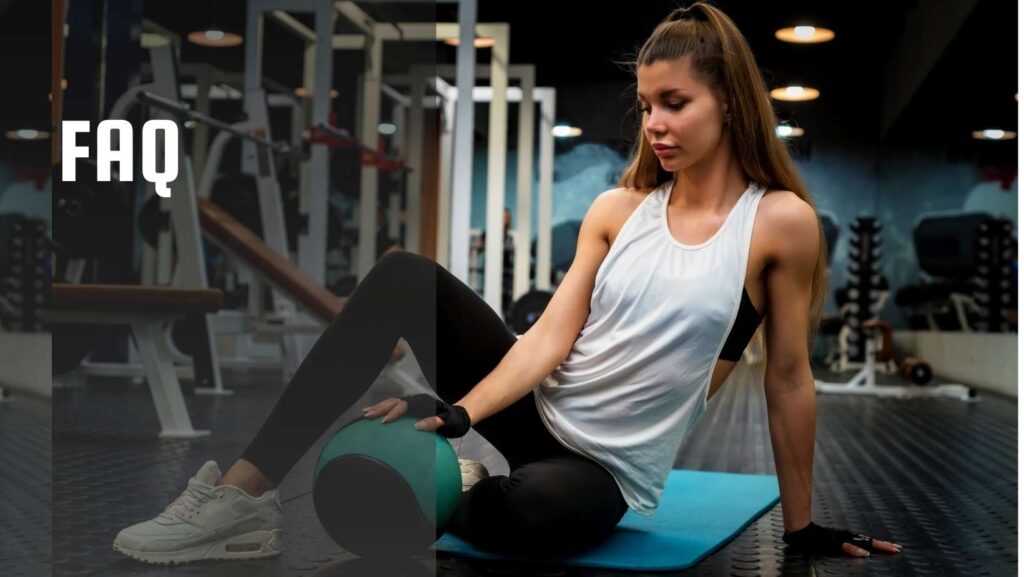
During my research, I found these FAQs on Calisthenics Abs Workout.
What Is The Role of Calisthenics Abs Workouts And How It Can Help With Your Calisthenics Exercises?
The idea of calisthenic abs workouts is to strengthen the muscles in your core, and that is, your abs, spinal erectors, and obliques.
A strong core can significantly improve balance, posture, and stability, which translates into better performance in daily activities, sports, and… you guessed it: calisthenics.
You might not realize it, but your core is constantly working hard to maintain your spine in a neutral and upright position, especially when you’re pushing through those calisthenics exercises.
But it doesn’t stop there!
Let’s dive into another exercise – the overhead press. During this movement, your core plays a crucial role in keeping your body tight and stable, allowing you to transfer force efficiently overhead.
It’s really impressive how your core silently supports you during all types of movements without you even realizing it!
So, the next time you hit the gym or tackle a challenging workout, remember to give credit to your core muscles. They’re the unsung heroes behind your stability, balance, and overall performance. Keep up the great work, and keep those core muscles strong!
Is It Possible To Obtain Six Pack Abs With Calisthenics?
You can build six pack abs from calisthenics because almost every bodyweight exercise will train your core and abdominal muscles if done properly.
A six-pack requires two things:
- Low Body fat percentage
- Hypertrophy of the rectus abdominis (i.e., make them bigger)
At the end of the day, getting a six-pack depends on several factors, such as:
- Your diet plan and nutritional intake
- Consistency in performing exercises
You won’t be able to see your six-pack unless you lose enough body fat to make them visible. This is why following a healthy diet to improve your body composition is recommended by experts.
Are All Ab Exercises Considered Calisthenics?
In general, all traditional ab exercises are calisthenic based as you use your bodyweight to challenge your midsection.
Can I Train Abs Even With Belly Fat?
Yes, you can train your abdominal muscles even if you have belly fat but don’t expect to see your abs if your body weight is too high and you have too much fat covering your abs.
In fact, you should train your abs regardless of your body fat levels. You can always strengthen the abdominal muscles underneath the fat to provide stability and balance to your body.
If you couple this with a weight loss nutrition plan, you will lose belly fat while developing your core musculature and improving your body composition.
Is It OK To Train Your Abs Everyday?
It is not recommended that you train any body part every day. It is important to give your muscles time to recover from your workouts to avoid muscle fatigue.
In general, you should rest at least 1-2 days before training a specific muscle group again.
So, How Often Should You Exercise Abs?
At least two times per week week. You can try with 3 to 4 times per week, but I personally find twice a week is enough.
Why Calisthenics Ab Workouts Can Help To Have Effective Calisthenics Workouts?
When it comes to ab workouts, many tend to treat them as additional or isolated workouts rather than incorporating them into a full-body workout routine.
To improve your overall functional fitness, you should treat your ab workout like any other workout and incorporate it into your program.
You’ll ensure that you work on your overall strength and stability rather than just isolating one muscle group.
The Most Important Part of Calisthenics Core Training
The most important part of calisthenics core training is progression. Progression refers to the gradual increase in difficulty, intensity, or volume of your exercise. To make progress, you should focus on getting stronger over time by challenging your muscles with hard but manageable workouts. You can achieve progression by increasing the number of reps, sets, or duration of your exercises or adding weight or difficulty.
Conclusion
Incorporating a calisthenics abs workout into your fitness regimen can significantly improve your overall fitness.
By strengthening your core, you reduce the risk of back pain, improve your balance, stability, and body control, and have better mobility in your daily activities.
Calisthenics exercises require no or minimal equipment, making it an accessible form of fitness for all. With the right approach and consistency, you can transform your ab workout from a simple isolated exercise to one that will improve your overall athleticism and health.
Pubmed references:
- Core Stability Training for Injury Prevention
- Strength and Power-Related Measures in Assessing Core Muscle Performance in Sport and Rehabilitation
- Effects of core strength training on core stability
- Optimizing performance by improving core stability and core strength
- Effects of Core Training on Sport-Specific Performance of Athletes: A Meta-Analysis of Randomized Controlled Trials
- Core Muscle Activity during Physical Fitness Exercises: A Systematic Review
- Effect of core training on skill-related physical fitness performance among soccer players: A systematic review
- Critical review of the impact of core stability on upper extremity athletic injury and performance
